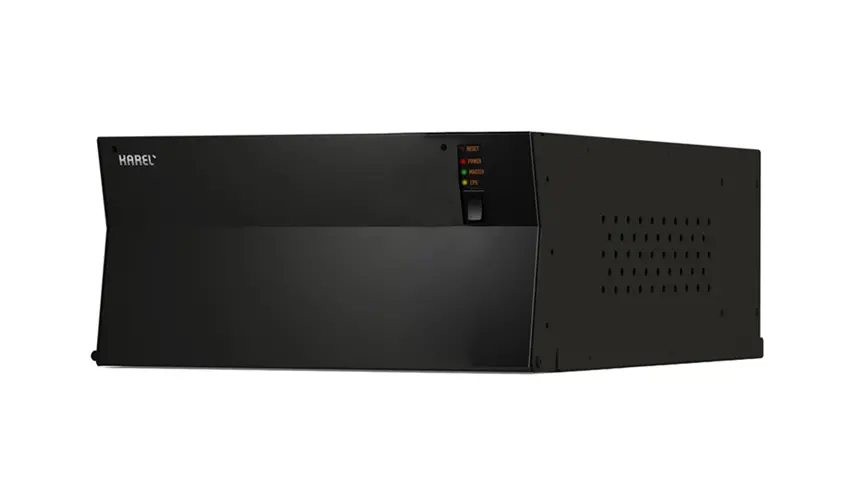IPG500

SYSTEM FEATURES
Since IPG Communication Platform is a real-time communication platform developed on the Linux operating system, it easily meets all kinds of integration needs. IPG500 is a system that can grow up to 112 TDM and 500 IP line capacity. Since IPG Communication Platform can be used as a software-only solution, it can be easily run on any server compatible with the Linux Suse operating system.
IPG Communication Platform supports up-to-date SIP and H323 protocols at a level that can offer many flexible services to its users. Its flexible and open-to-development software structure allows users to perform many web-based operations that they increasingly need, automatically answering incoming calls (IVR), voice recording (VR), voice mail boxes (VM), sending voice messages via e-mail. (VM2EM), instant messaging (IM), instant status information (Presence) monitoring, Microsoft Outlook© integration, such as many unified communication features.
The entire system structure is programmed and managed through the web server on the server. Thanks to the web infrastructure, the system can be easily programmed, managed and personalized both closely and remotely.
Thanks to the system’s RTP proxy feature, it allows easy and fast remote IP subscriber use without the need for port forwarding and VPN structures for use behind NAT.
HARDWARE FEATURES
With its 19” cabinet structure, the IPG Communication Platform does not require additional cabinets and investments, and can be used in standard system cabinets. The fact that the cards used in the system have a power circuit on their own provides power efficiency, while providing a much more resistant structure against power regime deviations that may come from the outside world. Both FSK and DTMF can be detected/generated without the need for an additional card for Caller ID.
DISTRIBUTED AND CENTRALIZED CONFIGURATION
IPCC Structure: Systems in all locations with an IP network can be used in a single system structure. In this structure, the system works on one or two servers in a redundant state. The systems in all units communicate with the central server over the IP network and work as the towers of the system. In case of a problem in the connection between the center and the tower, the tower works as a system on its own and when the problem is resolved, it communicates with the center again and joins the body of a single system. Thanks to this structure, geographical redundancy and continuity are supported. Gateway modules of both IPG1000 and IPG500 systems can be used when configuring towers.
The IPG Series can be expanded in a single system structure by connecting to each other only via the Ethernet infrastructure with the IPCC structure, and this growth can be realized independently of the distance.
Suitable for Fiberoptic Infrastructure: With the integrated Fiber Optic Card in the IPG Communication Platform, the fiber optic network can be terminated directly on the system. In this way, there is no need to use a fiber switching device and to be fed with a battery or UPS.
Integrated Features with VRC CARD: Integrated voice recording, IVR, voice message recording and Voice Mail (voice mail sending) are embedded in the hardware and software of the VRC card. These features are optionally available depending on your needs. You can have 16-channel voice recording and 16-channel IVR features by activating only with a VRC license, without the need for additional equipment, whenever you want. In cases where more channels are needed, additional VRC card and license should be added. With the VRC card, embedded call recording and IVR are provided in the IPG Communication Platform. System and robot operator messages can be read, voice messages can be left to subscribers and messages can be listened to. Calls of subscribers and external lines can be recorded. Recorded conversations and messages can be sent as e-mail or, if preferred, stored on the system or in an external environment. Call records can be tracked and reported with WebCM.
FULLY INTEGRATED GATEWAY STRUCTURE
One of the most important features that makes the IPG Communication Platform different is its integrated media gateway structure. The IPG500 gateway can grow to 112 TDM lines.
- Capacity
- Standard Line Capacity IPG500: 600 Lines, IPG1000: 64,000 Lines
- Audio Gateway Modules
- FSK Caller ID Supported Analog Subscriber Card 16 Lines
- FSK or DTMF Caller ID Supported Analog Trunk Card 8 Lines
- Kou Card: Special digital subscriber card 16 Lines
- E1 Card: PRI, R2 or QSIG connection card 30 channels
- E&M Connection Card 4 lines
- MGW Card Gateway card that acts as a bridge between IP and TDM structure, 16 channels
- VRC Card IVR, voice recording and voicemail card, 16 channels
- I/O Card Card that connects the system and different accessory groups
- FOK Card Fiber optic ethernet switcher 1 FO 4 copper Ethernet line
- Hardware Features
- Ethernet Interface 10/100/1000 Base-TX Ethernet, Loop Started
- External Line Interface DP and DTMF Signaling, 12/16 KHz Top Up Signal Detection, Pole Shift Detection
- E1 Interface ETSI EN 300 402
- PRI ISDN Interface DSS1 (Q921 & Q931)- ETSI EN 300 403
- R2 Digital Interface DC Conversion or Pulse type signaling
- E&M External Line Interface Supports type 1, 2, 3, 4 or 5.
- Signaling No Delay Start, Beacon Delay Start, and Delayed Start
- Dial numbers DP or DTMF
- way of speaking 2 wires or 4 wires, ANI support with R1 signaling USB: 2 x USB 2.0
- Power source 48 VDC- Max. 35 Watts Per Rack Press
- connectors Ethernet: RJ45, Extension and extensions: RJ45, External relay and external
- music 623K4, External interfaces Pin type (2-pin), RS232 interface: RJ11
- External Links Standard Telephones, Karel Special Telephone Sets (FT20),
- External Links Karel DSS200 Modules, Karel Digital Telephones (ST26, ST30, ST32, NT30D,
- External Links NT10D), ISDN Devices (Iris), PC/Serial Printer, Alarm
- External Links CRL (Call Record Listing): PC Interface (Local Area Networks or single PC), Serial Printer Interface